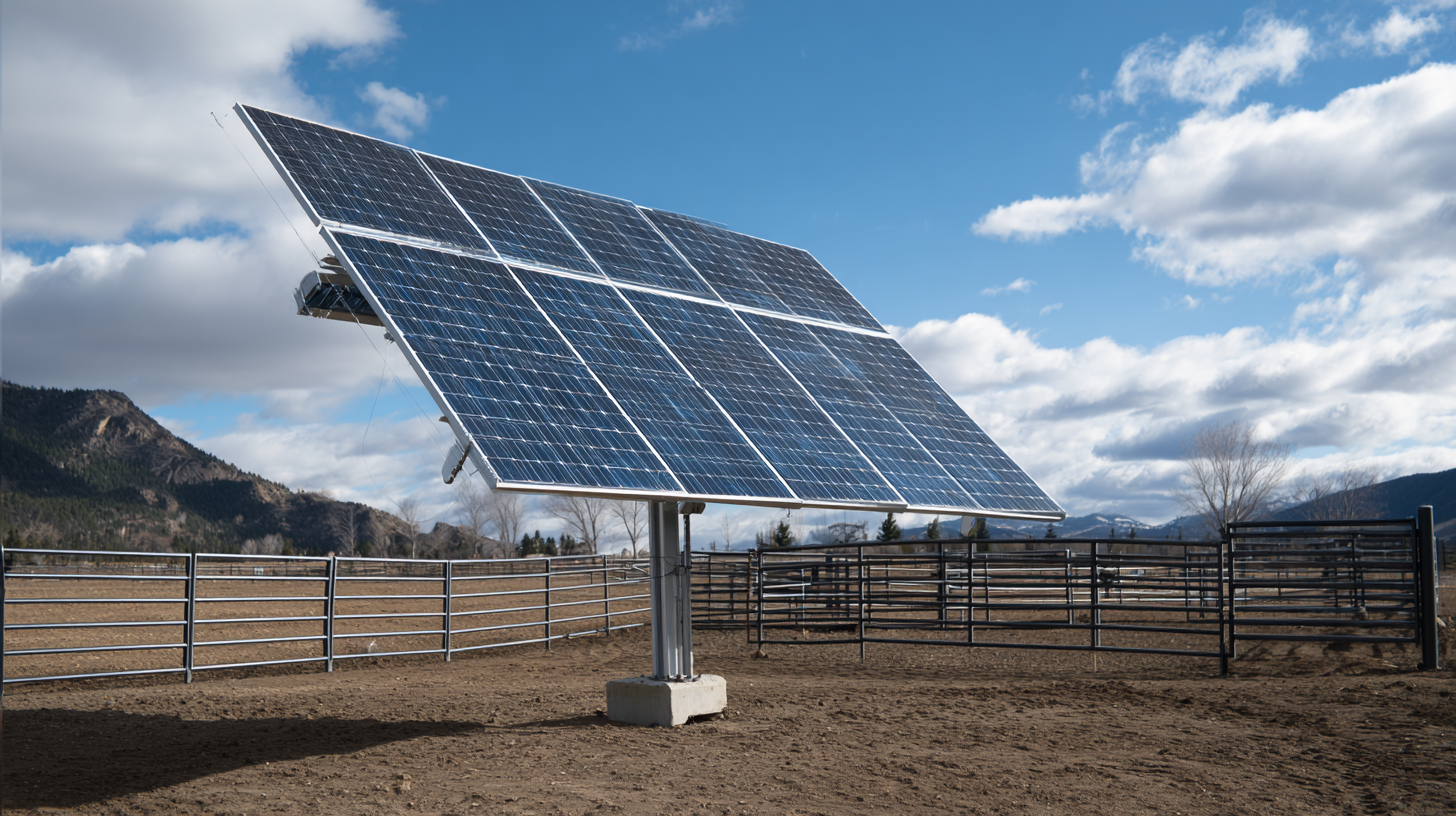Understanding Industry Standards for Best Solar Electricity: A Data-Driven Approach
In today's rapidly evolving energy landscape, understanding industry standards for solar electricity is crucial for maximizing efficiency and sustainability. With increasing concerns over climate change and the urgent need to transition to renewable energy sources, the solar power sector has experienced remarkable growth. However, alongside this expansion come significant challenges and problems related to differing standards and practices within the industry. This blog aims to explore these issues through a data-driven approach, examining how inconsistencies in performance metrics, installation practices, and regulatory compliance can affect the overall effectiveness of solar electricity systems. By highlighting these challenges, we hope to provide valuable insights that can guide stakeholders in navigating the complexities of solar electricity, ultimately leading to enhanced reliability, lower costs, and a more resilient energy future.

Best Practices in Solar Panel Efficiency: A Data-Driven Review of Leading Technologies
The efficiency of solar panels has become a focal point for both consumers and manufacturers, as advances in technology continually reshape the industry. According to a report by the National Renewable Energy Laboratory (NREL), the average efficiency of commercially available solar panels has increased from about 15% a decade ago to over 22% today. This improvement is attributed to innovative materials, such as bifacial modules and perovskite cells, which are setting new benchmarks for performance.
Furthermore, the International Energy Agency (IEA) forecasts that by 2025, the global solar photovoltaic (PV) market will generate an estimated 1,000 GW of new capacity, primarily driven by advancements in efficiency. Among the leading technologies, monocrystalline panels currently lead the market, boasting efficiencies that can exceed 24%. Notably, the adoption of these high-efficiency solar panels can lead to substantial reductions in the cost-per-watt, promoting greater accessibility to solar energy solutions. As the industry evolves, stakeholders must align their strategies with these best practices to maximize potential returns on investment in solar technology.
Best Practices in Solar Panel Efficiency
This chart illustrates the average efficiency of different solar panel technologies based on industry standards. Data points represent the conversion efficiency rates of monocrystalline, polycrystalline, and thin-film solar panels.
Comparative Analysis of Global Solar Energy Adoption Rates: Insights from Recent Statistics
The global adoption of solar energy continues to evolve, influenced by various factors that drive its integration into national energy systems. Recent statistics reveal that on the summer solstice, solar energy accounted for a remarkable 20% of the world's electricity generation. This significant contribution underscores the growing reliance on solar power, particularly during peak demand periods. As countries strive to enhance their renewable energy portfolios, understanding the comparative adoption rates becomes crucial for identifying successful strategies and areas for improvement.
In addition to solar's success, the exploration of hybrid renewable energy systems—particularly those that synergize solar and wind technologies—presents both challenges and opportunities. An in-depth review highlights that while hybrid systems can optimize energy production, their implementation often faces hurdles such as regulatory constraints and technological integration. Moreover, regional studies indicate that factors influencing the uptake of rooftop solar, varying between residential and non-residential sectors, can provide valuable insights into localized strategies. Such analyses inform policymakers and industry leaders on how best to shape and support the rapid expansion of solar energy adoption across different contexts.

Understanding the Role of Regulatory Standards in Optimizing Solar Energy Production
The role of regulatory standards in optimizing solar energy production is crucial in ensuring that solar technologies operate at their full potential while adhering to safety and environmental protocols. These standards not only guide the technical specifications of solar panels and inverters but also establish the necessary procedures for installation and maintenance. By complying with these regulations, solar energy providers can mitigate risks and enhance the reliability and efficiency of their systems. This framework fosters consumer confidence and encourages wider adoption of solar technologies.
Moreover, regulatory standards drive innovation by establishing benchmarks that manufacturers must meet. These benchmarks often lead to advancements in efficiency, enabling solar panels to convert sunlight into electricity more effectively. In this competitive landscape, adhering to regulatory standards becomes a differentiating factor, as companies that prioritize compliance may gain a market edge through enhanced product performance and lower operational costs. Overall, understanding and integrating these standards into solar energy strategies is essential for optimizing production and advancing the sustainability objectives of the industry.
Evaluating the Impact of Geographic Factors on Solar Energy Output: A Data Perspective
Geographic factors play a crucial role in determining the effectiveness of solar energy systems. Elements such as latitude, altitude, and local climate conditions significantly influence solar radiation levels, which directly affect electricity output. For instance, regions closer to the equator generally receive more consistent sunlight throughout the year, while areas with frequent cloud cover or extreme weather may see a marked reduction in solar energy generation. By analyzing data related to these geographic factors, we can better predict and enhance the efficiency of solar installations.
Moreover, understanding the topography of an area can inform optimal solar panel placement. For example, sloped terrains can maximize sunlight exposure, while urban environments may create shadows that impede energy capture. Utilizing advanced data analytics, researchers can map out ideal sites for solar farms, ensuring that regional characteristics are leveraged to their fullest potential. This data-driven approach allows for more strategic planning and investment in solar infrastructure, ultimately leading to higher yields and better sustainability outcomes.

Innovative Solar Energy Solutions: Case Studies of High-Performing Installations Worldwide
Innovative solar energy solutions are reshaping the landscape of electricity generation worldwide. Case studies of high-performing installations reveal that regions with robust solar energy frameworks are experiencing remarkable efficiency gains. For instance, a recent report by the International Renewable Energy Agency (IRENA) indicates that global solar capacity reached over 900 GW in 2020, with countries like Germany and China leading the charge in adopting advanced photovoltaic technologies.
Innovative designs, such as bifacial solar panels and tracking systems, have shown to increase energy generation by up to 30%, providing tangible benefits for both large-scale plants and residential installations.
Furthermore, the integration of artificial intelligence and data analytics into solar operations enhances performance monitoring and predictive maintenance. A case study from a solar farm in California demonstrated a 15% increase in output by employing machine learning algorithms to optimize the angle of panels based on real-time weather data.
According to the U.S. Department of Energy, improving operational efficiencies through such technologies can reduce the Levelized Cost of Electricity (LCOE) by approximately 20%, making solar energy not only more sustainable but also cost-effective. These insights underscore the importance of adopting innovative practices and leveraging technology to harness the full potential of solar energy on a global scale.


